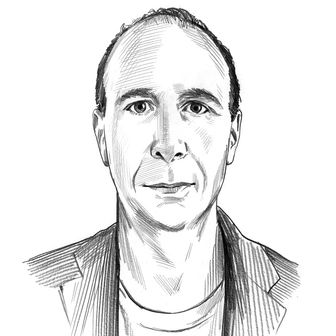
On February 29, Max Boot, a neoconservative columnist and then a foreign-policy adviser to Marco Rubio, wrote that if Donald Trump were to win his party’s nomination, it would “confirm everything bad that Democrats have ever said about the GOP.” In May, he pronounced the Republican Party “dead” and announced that “[Hillary] Clinton would be far preferable to Trump.” By July, he was admitting in the New York Times that Trump was the most noxious manifestation of “the party’s anti-intellectual drift.” The rise of Trump has provoked similar reactions from other neoconservatives, including David Frum, Dan Senor, James Kirchick, Michael Gerson, Jennifer Rubin, Eliot A. Cohen, John Podhoretz, Bret Stephens, Robert Kagan, and even the Republican operator William Kristol (who has tried, without success, to organize a Republican Party–in–exile). Not all these figures have endorsed Clinton, but every one has treated the Republican nominee as something much worse than a suboptimal choice or a surefire loser; Trump is, in their estimation, a threat to democracy itself and a symptom of deep rot within the party.
The fissures that led to the Republican Party’s crack-up over its crackpot nominee run along several lines. There is the demographic one, separating the young, Latinos, and college-educated women from the loyal base of older, blue-collar, white men. There is a characterological one, splitting Republicans who recoil from cruel, flamboyantly ignorant bullies and those who find these traits acceptable, even praiseworthy. Among the party’s professional class, there are Republicans who are either retired or running in blue states, then those who have a future in red-state politics. Then there is the schism within the party’s intellectual vanguard. While social and economic conservatives have remained mostly loyal, the neoconservatives have found themselves outcasts from a party they very recently led.
The original neoconservatives were a small faction of formerly liberal or left-wing intellectuals, disproportionately Jewish, who defected to the GOP in the 1970s. (One of them, Kristol’s father, Irving, famously quipped that a neoconservative was a liberal who had been “mugged by reality.”) Their complaints with the left centered on foreign policy, on how the Democratic Party had grown more dovish in the wake of Vietnam. Over time, they adapted themselves to the whole Republican litany, carving out a useful role defending supply-side economics, the conspiratorial ravings of Pat Robertson, and pretty much any lunacy attached to the party. Yet foreign affairs remained the distinctive field in which they largely dictated conservative doctrine. Neocons saw a black-and-white morality as the foundation of the American victory in World War II and then the Cold War; indeed, they believed it could be applied to every foreign conflict and, with the appropriate application of willpower and righteousness, result in the inevitable spread of democracy everywhere. Neoconservatives famously developed the master plan to defeat Al Qaeda via democratic regime change throughout the Middle East.
The fall of Baghdad represented the apogee of neoconservative influence within the party. In April 2003, Frum, who had previously been a speechwriter for the Bush administration, wrote a cover essay for National Review, the conservative movement’s flagship publication, excommunicating the isolationist paleoconservatives. At the time, it hardly seemed worth the effort, as the objects of Frum’s banishment consisted mostly of obscure cranks lacking any channels of influence. During the Bush era, neoconservatism was riding so high it had essentially grown synonymous with conservatism. Many liberals learned to read the neo- prefix as a kind of intensifier: A neoconservative seemed to mean an ultraconservative, the most fanatical and dangerous strain.
While Bush’s second-term collapse surfaced some challenges to the party’s neoconservative identity, the neocons retained their pride of place. The following two Republican presidential nominees embraced the familiar neoconservative style. They laced into Barack Obama for his alleged faintheartedness in promoting American exceptionalism and vowed to push harder against all of America’s rivals on every global front. (Russia, in Mitt Romney’s estimation, was America’s “No. 1 geopolitical foe.”)
It took nearly eight years after Bush left office for his party’s voters to depose the neocons. In Trump, the GOP base found a candidate who claimed that he opposed the Iraq War from the outset (not true) and that Bush had ignored pre-9/11 warnings about terrorist threats and then used cooked intelligence to sell the war (true). Trump has praised dictators, threatened to break up American alliances, expressed contempt for democratization, and seemed to invite Vladimir Putin to gobble up more territory. He has embraced the “America First!” slogan associated with the isolationists and anti-Semites of the 1930s and has attracted an unusually vocal contingent of anti-Semitic fans.
Not all neoconservatives are Jewish — in fact the Gentile ones, like Dick Cheney, Donald Rumsfeld, William Bennett, and Steve Forbes, still tend to support Trump. But Trump has struck at the heart of Jewish neoconservatism at a level deeper than mere doctrine. The original neocons were influenced by Leo Strauss, a Jewish philosopher who fled Nazi Germany and feared the power of demagogues to manipulate the masses. They were elitists who cultivated an aura of erudition and believed in intellectualism — or at least pseudo-intellectualism.
And while neocons have always joined standard conservatives in downplaying white racism, they never opposed the civil-rights movement like William F. Buckley did, instead arguing that it went offtrack after dismantling legal apartheid in the South. Trump’s blunt appeal to white identity politics has pried open this divide. Frum’s 2003 essay attacking the paleoconservatives denounced the very sort of people now flocking to Trump — “white racialists” for whom “race and ethnicity were from the start essential and defining issues.” The whiff of Herrenvolk democracy (a democracy representing only the interests of the dominant race) is an especially frightening phenomenon to those who suspect they’re not included among the Volk. “This is how fascism comes to America,” Kagan wrote in May.
In July, Kagan appeared at a fund-raiser for Clinton’s campaign. Should she win, many neocons will likely return to the Republican fold, fighting to restore the party to its pre-Trumpian state. But it is possible that the campaign will leave a permanent mark on their thinking and that the GOP will remain a staunchly nativist and isolationist party. Clinton is no neocon, and any neoconservative influence would set off a nuclear reaction on the left, which already views her with intense suspicion. But she does have more interventionist instincts than Barack Obama, and the Republican opposition to her foreign policy is likely to take on a distinctly isolationist cast. (During the 1990s, most Republicans denounced Bill Clinton’s successful airstrikes in Serbia and Kosovo, which helped save Kosovars from Serbian attacks.) Some neocons might find in Clinton a president amenable to their influence — indeed, one could imagine the Democratic Party Establishment being swayed by neoconservative thought in some of the same ways the Republican Party was a decade ago. (Kagan, whose wife, Victoria Nuland, works in the State Department, could
possibly have a role in a Clinton administration.)
It is a strange paradox that a candidate as indifferent to ideas as Donald Trump — a television addict who can hardly be bothered to read anything longer than 140 characters — might have a more profound influence on the intellectual landscape of the party system than any nominee since
Ronald Reagan. For more than a generation, the same factions have fought over more or less the same issue terrain. With his European-style alt-right, Trump is adding a new sect to his party’s intellectual class while possibly driving out an old one. Neoconservative means “new conservative,” of course, and perhaps the last-in-first-out principle will hold. They are, for the time being, a sect without a party.
This article appears in the August 22, 2016 issue of New York Magazine.






























